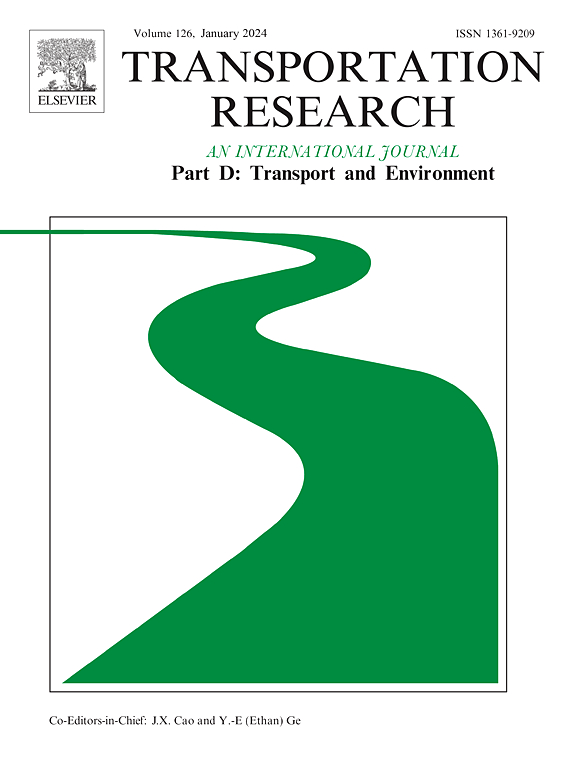电动汽车采用的模型及采用的动因
IF 7.7
1区 工程技术
Q1 ENVIRONMENTAL STUDIES
Transportation Research Part D-transport and Environment
Pub Date : 2025-07-11
DOI:10.1016/j.trd.2025.104906
引用次数: 0
摘要
虽然人们对理解电动汽车(EV)的采用模式有广泛的兴趣,但许多现有的研究仅限于对声明的采用意图的检查,而不是对实际行为的检查。因此,我们对1098个加州家庭进行了调查,以研究人口统计学、生活方式偏好和对电动汽车特征的看法对采用行为的影响。此外,该调查还要求现有的电动汽车车主对影响其购买决定的一系列因素的重要性进行排名,从而对电动汽车购买动机进行调查。通过在联合二元排序选择框架中对电动汽车采用和动机进行建模,我们考虑了样本选择效应,使我们能够将这些动机推广到整个人群,并确定政策措施来鼓励尚未采用电动汽车的人群采用电动汽车。这种方法为电动汽车激励政策的实施、电动汽车的部署和电动汽车充电基础设施的发展提供了见解。本文章由计算机程序翻译,如有差异,请以英文原文为准。
A model of electric vehicle adoption and motivating reasons for adoption
While there is broad interest in understanding electric vehicle (EV) adoption patterns, many existing studies are confined to an examination of stated adoption intentions rather than revealed behaviors. Accordingly, we use a survey of 1,098 California households to examine the ways that demographics, lifestyle preferences, and perceptions of EV characteristics impact revealed adoption behaviors. In addition, the survey asked current EV owners to rank the importance of a set of factors that influenced their adoption decision, enabling an investigation of the motivations for EV ownership. By modeling EV adoption and the motivations in a joint binary-ranked choice framework, we account for sample selection effects, enabling us to generalize these motivations to the population at large and identify policy measures to encourage adoption among those who have yet to adopt. This approach provides insights into the implementation of EV incentive policies, deployment of EVs, and development of EV charging infrastructure.
求助全文
通过发布文献求助,成功后即可免费获取论文全文。
去求助
来源期刊
CiteScore
14.40
自引率
9.20%
发文量
314
审稿时长
39 days
期刊介绍:
Transportation Research Part D: Transport and Environment focuses on original research exploring the environmental impacts of transportation, policy responses to these impacts, and their implications for transportation system design, planning, and management. The journal comprehensively covers the interaction between transportation and the environment, ranging from local effects on specific geographical areas to global implications such as natural resource depletion and atmospheric pollution.
We welcome research papers across all transportation modes, including maritime, air, and land transportation, assessing their environmental impacts broadly. Papers addressing both mobile aspects and transportation infrastructure are considered. The journal prioritizes empirical findings and policy responses of regulatory, planning, technical, or fiscal nature. Articles are policy-driven, accessible, and applicable to readers from diverse disciplines, emphasizing relevance and practicality. We encourage interdisciplinary submissions and welcome contributions from economically developing and advanced countries alike, reflecting our international orientation.

 求助内容:
求助内容: 应助结果提醒方式:
应助结果提醒方式:


